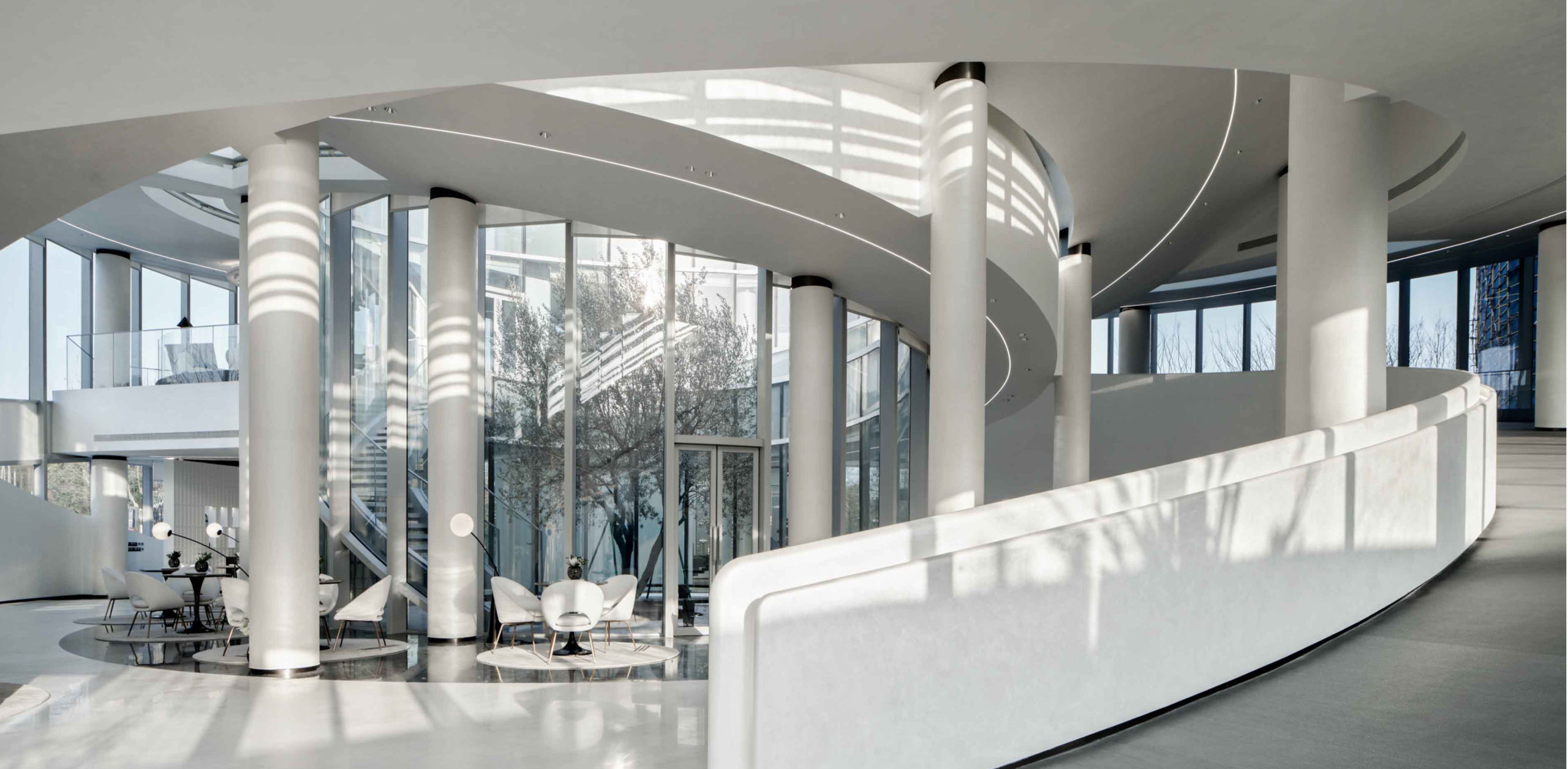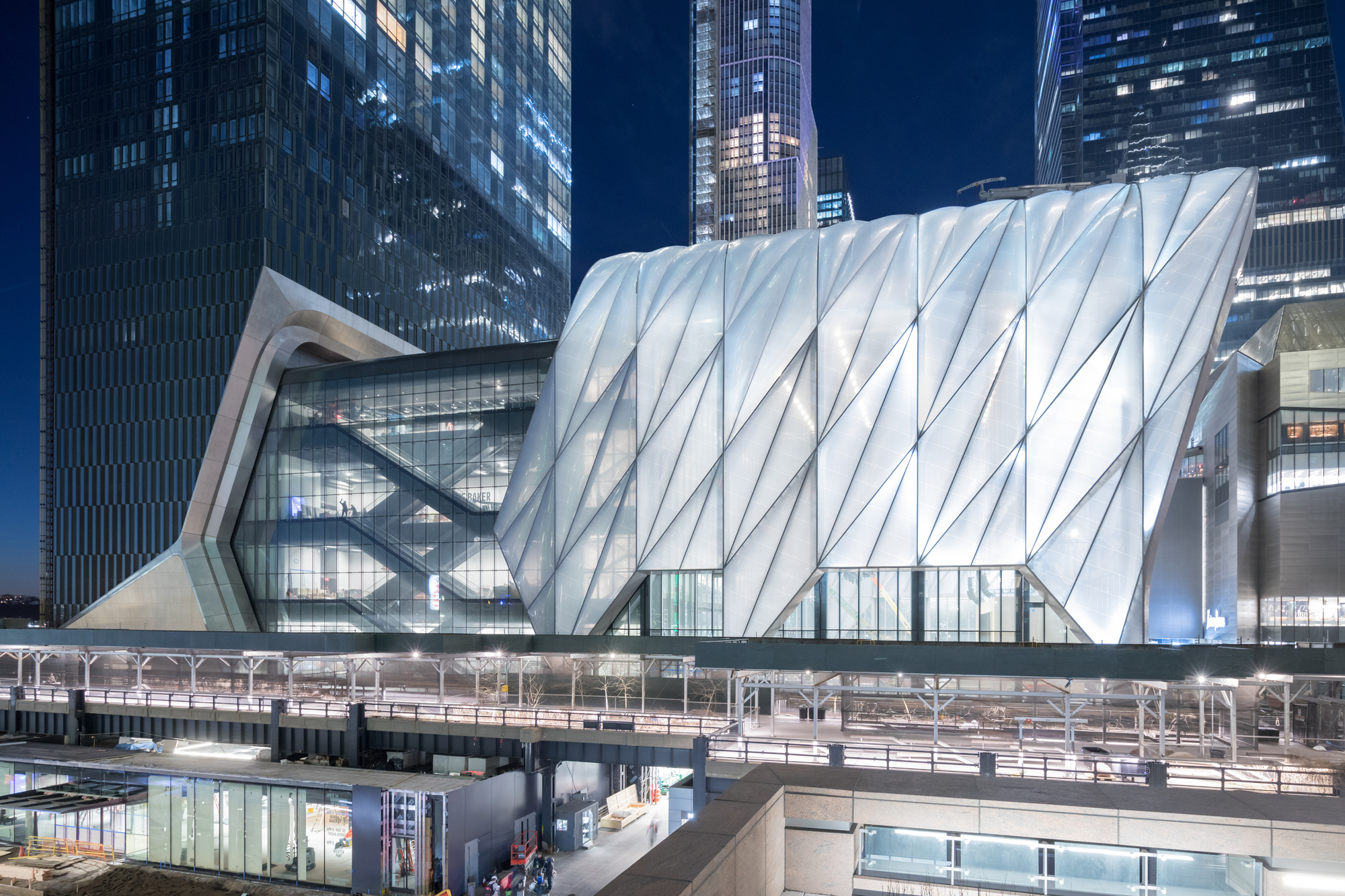Celebrate a Decade of Inspirational Design with us! Architizer’s 10th Annual A+Awards program launches this fall — sign up to receive key program updates and deadline reminders.
Amidst devastating climate reports, and as we live through real-life tragedies at the hands of human-caused environmental breakdown, small symbols can go a long way to inspire hope for the next generation. One such symbol just opened in Beloit, Wisconsin, where a recently decommissioned and century-old coal power plant was transformed into a center for student life. Aptly renamed The Powerhouse, this innovative adaptive reuse project will nurture and inspire young minds who face an unprecedentedly daunting geopolitical and environmentally uncertain future.
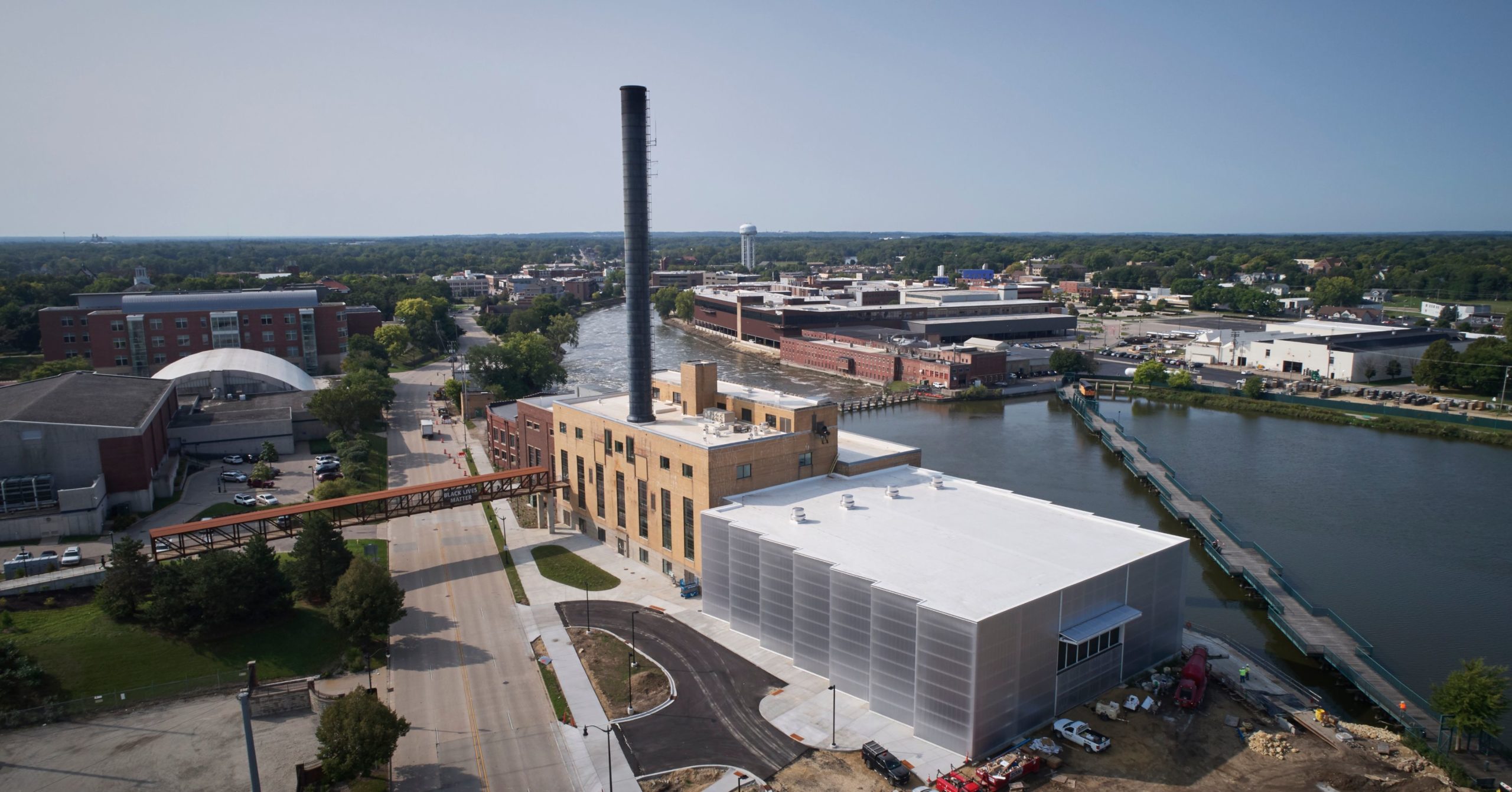
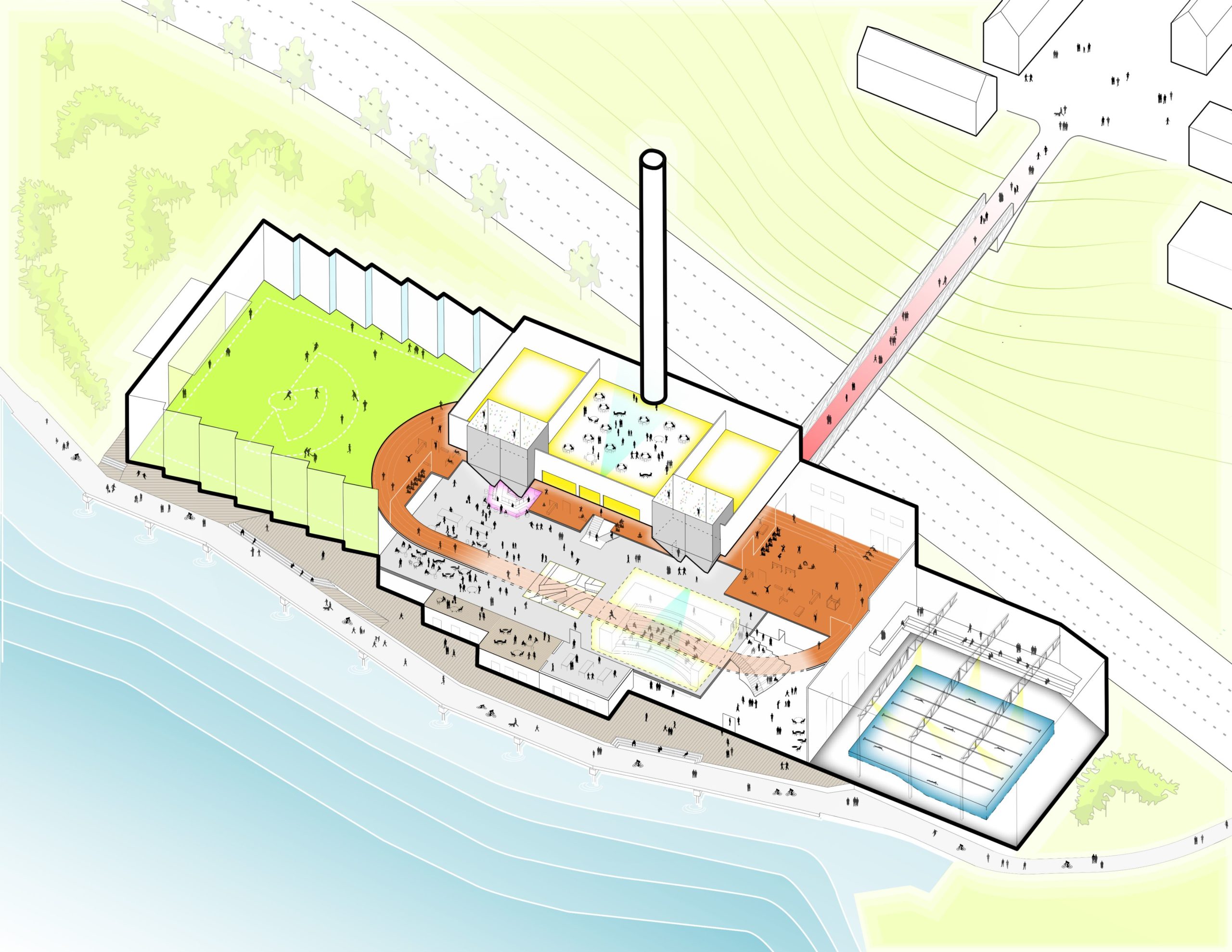
Photos by Tom Harris
The Blackhawk Generating Station was constructed between 1908–1947 and consisted of an assemblage of buildings; Studio Gang spearheaded the adaptive reuse of the extant structures and a new field house addition. The project is unprecedented in America: it approaches the former coal-fired power plant as a historical structure, integrating multiple modern programs while preserving its original character. The architects harnessed the spatial qualities of the historical buildings and retains iconic architectural features and original industrial equipment while incorporating new sustainable practices and lively gathering spaces.
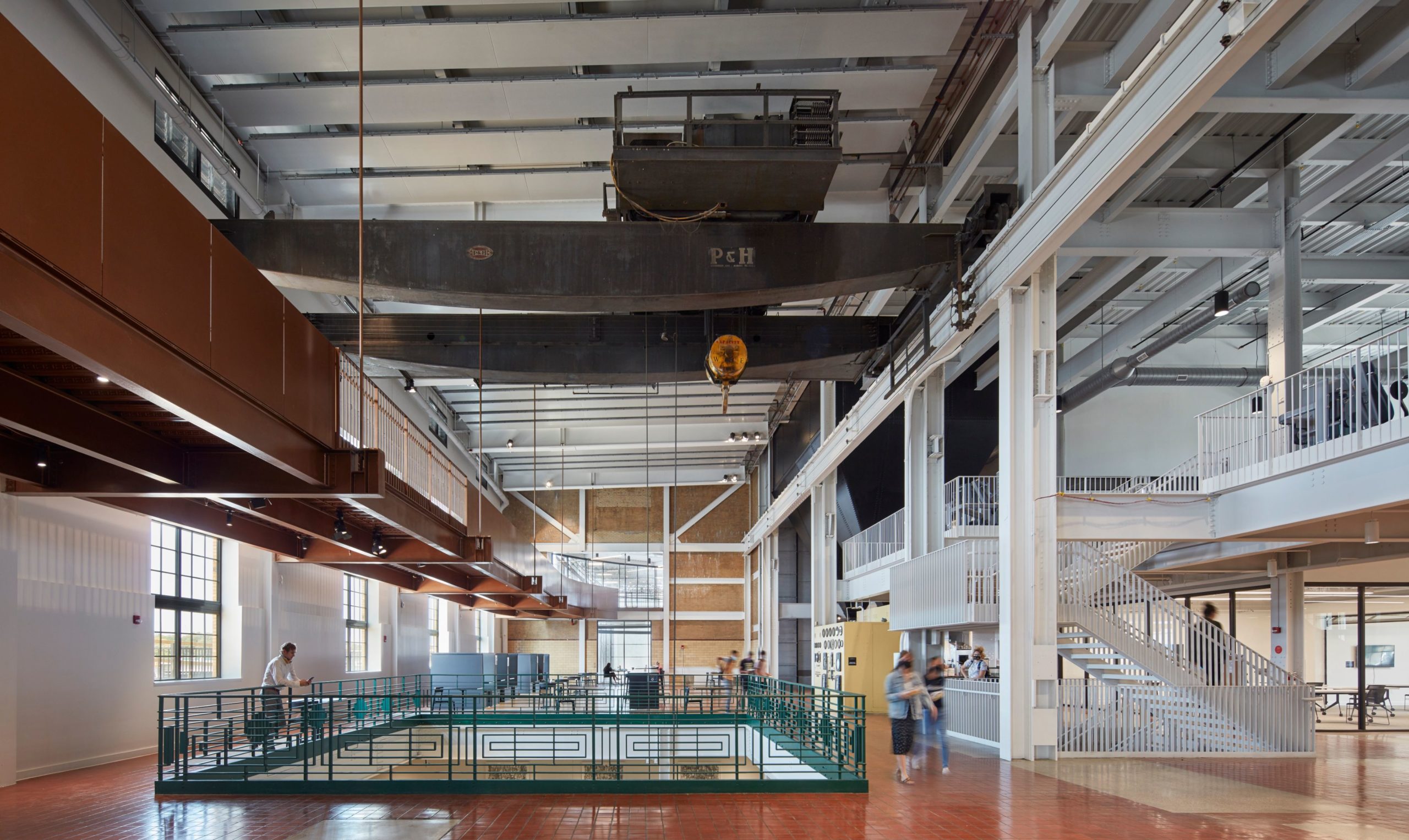
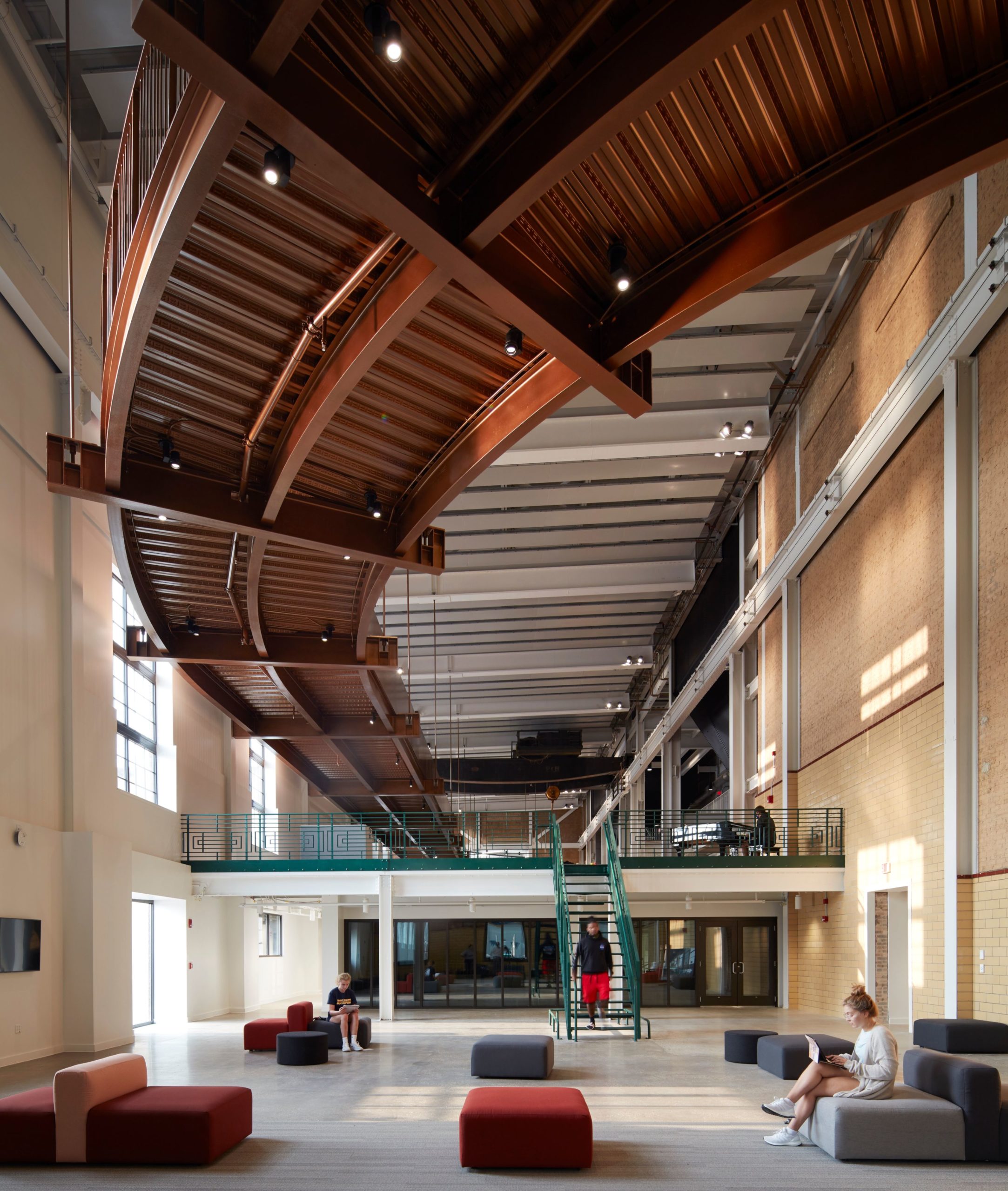
Photos by Tom Harris
The design draws on the expansive spaces of the defunct power plant, including a 120,000-square-feet building footprint and 20-to-40-foot-high ceilings. A suspended, three-lane track snakes throughout the building, uniting the various programmatic elements such as a fitness center and recreational gym, an eight-lane competition swimming pool, and an indoor turf field house. In addition to sports and study spaces, the building is also home to collaborative work areas and lounges, coffee shops and club rooms, a conference center and a 164-seat auditorium.
Transforming the hundred-year-old structure into a contemporary, multi-functional building presented significant challenges, especially regarding energy efficiency. Amidst the shiny new upgrades, the facility maintains historical industrial features, including coal hoppers and funnels, a 100-foot tall smokestack, old intake pipes and retro gauges. Yet, while nodding to the past, the Powerhouse also harnesses new technology with a forward-looking gaze.
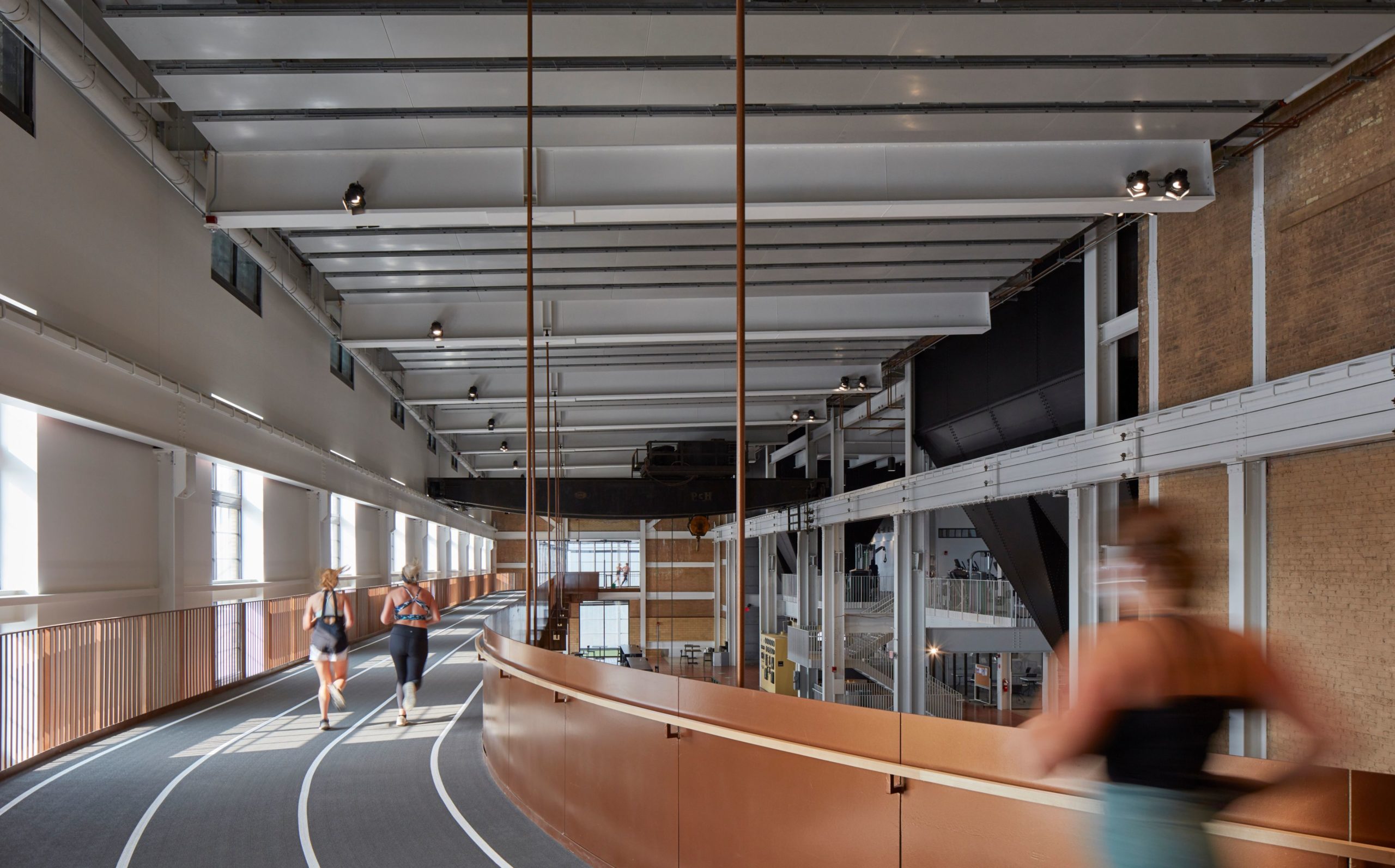
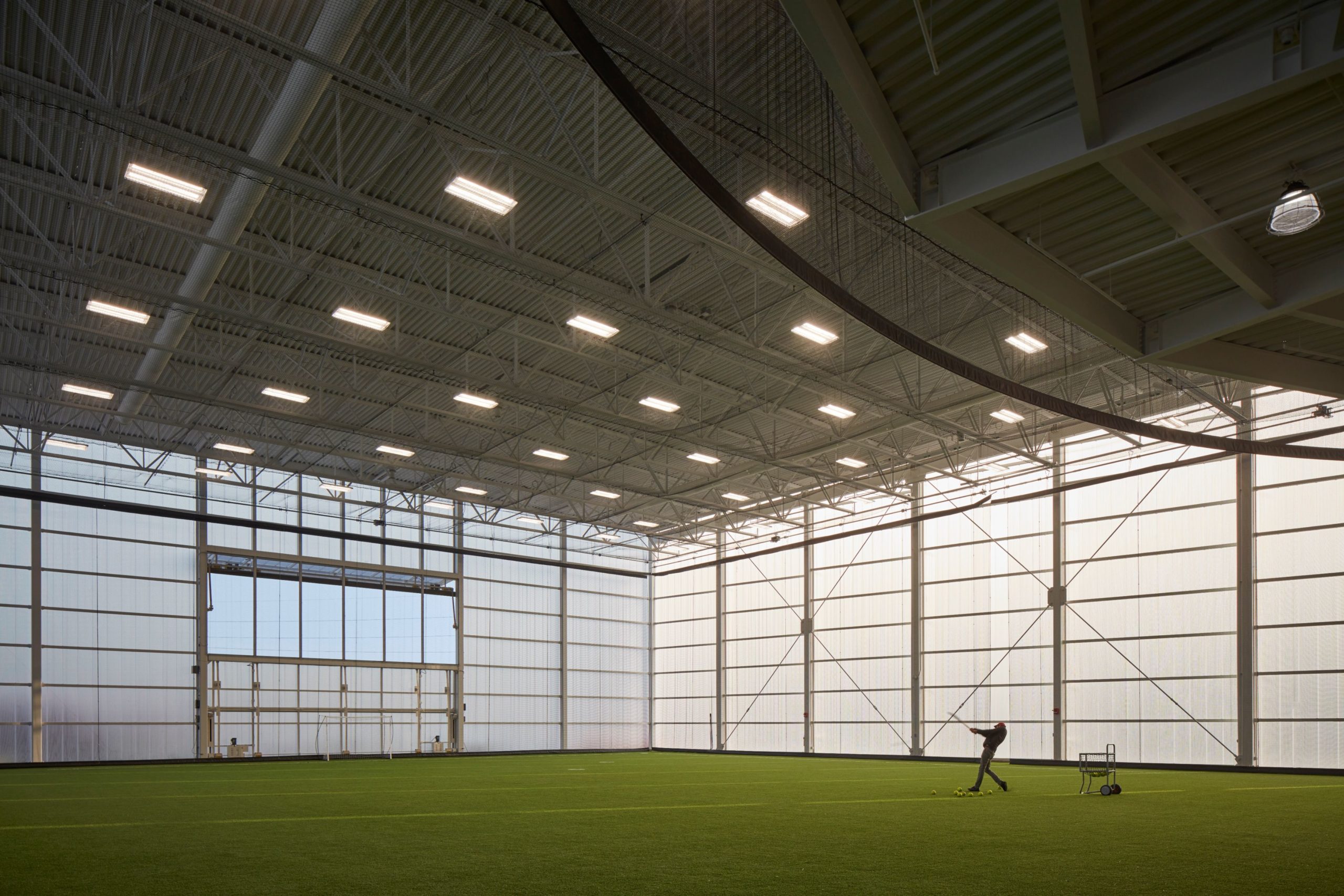
Photos by Tom Harris
New insulation regulates heat flow in the historical portions of the building. A polycarbonate façade of the new field house provides advanced thermal insulation and abundant, diffuse natural light throughout the day. In addition, a radiant panel and slab system harnesses energy from the Rock River for most of the Powerhouse’s heating and cooling needs, improving comfort within the building and maintaining the highest air quality while also minimizing total energy use.
The project also represents the institution’s expansion towards the banks of the Rock River, adjacent to the College’s campus and close to downtown Beloit; it will enhance student’s education experience and is also an urban intervention aimed at revitalizing the riverfront area.
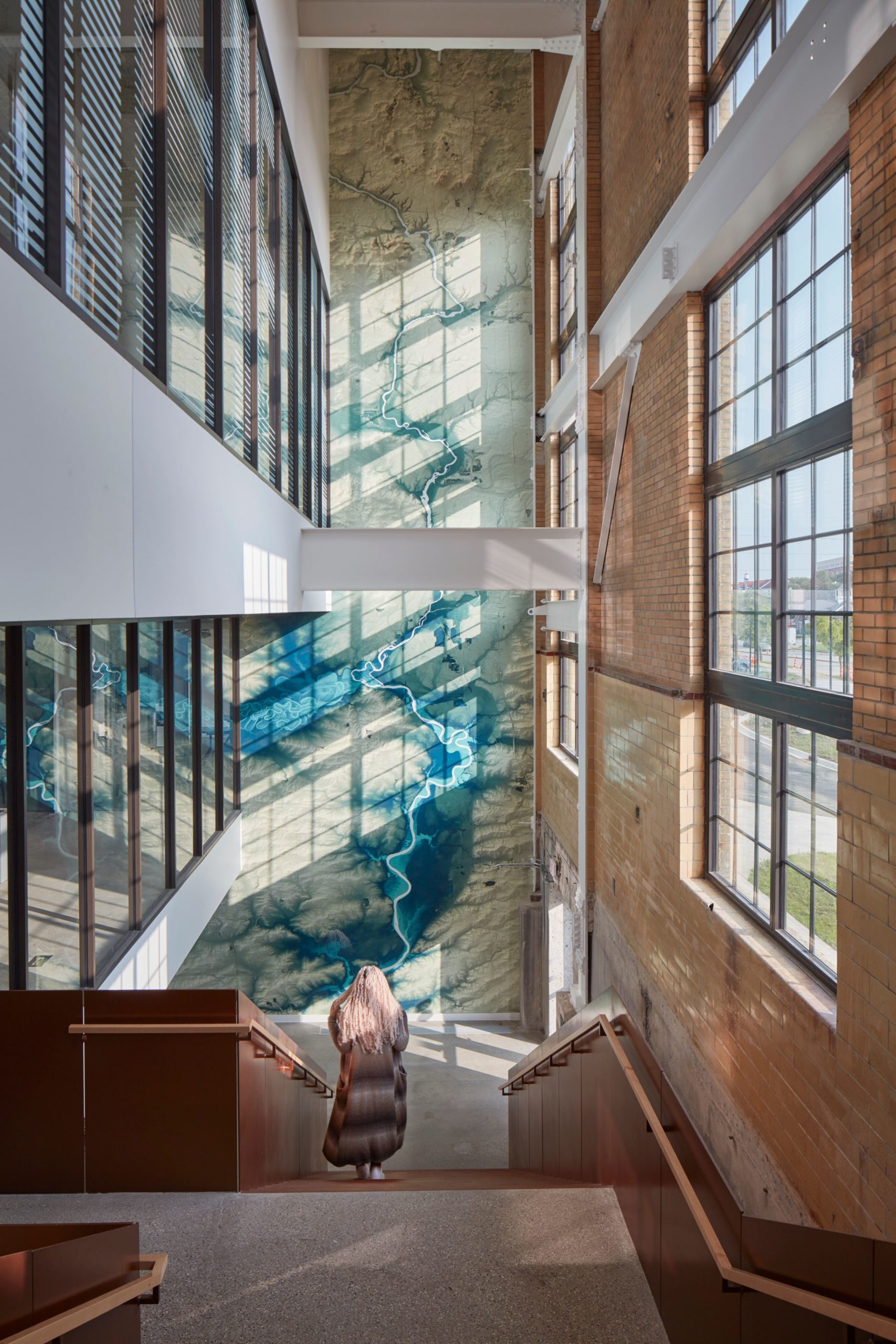
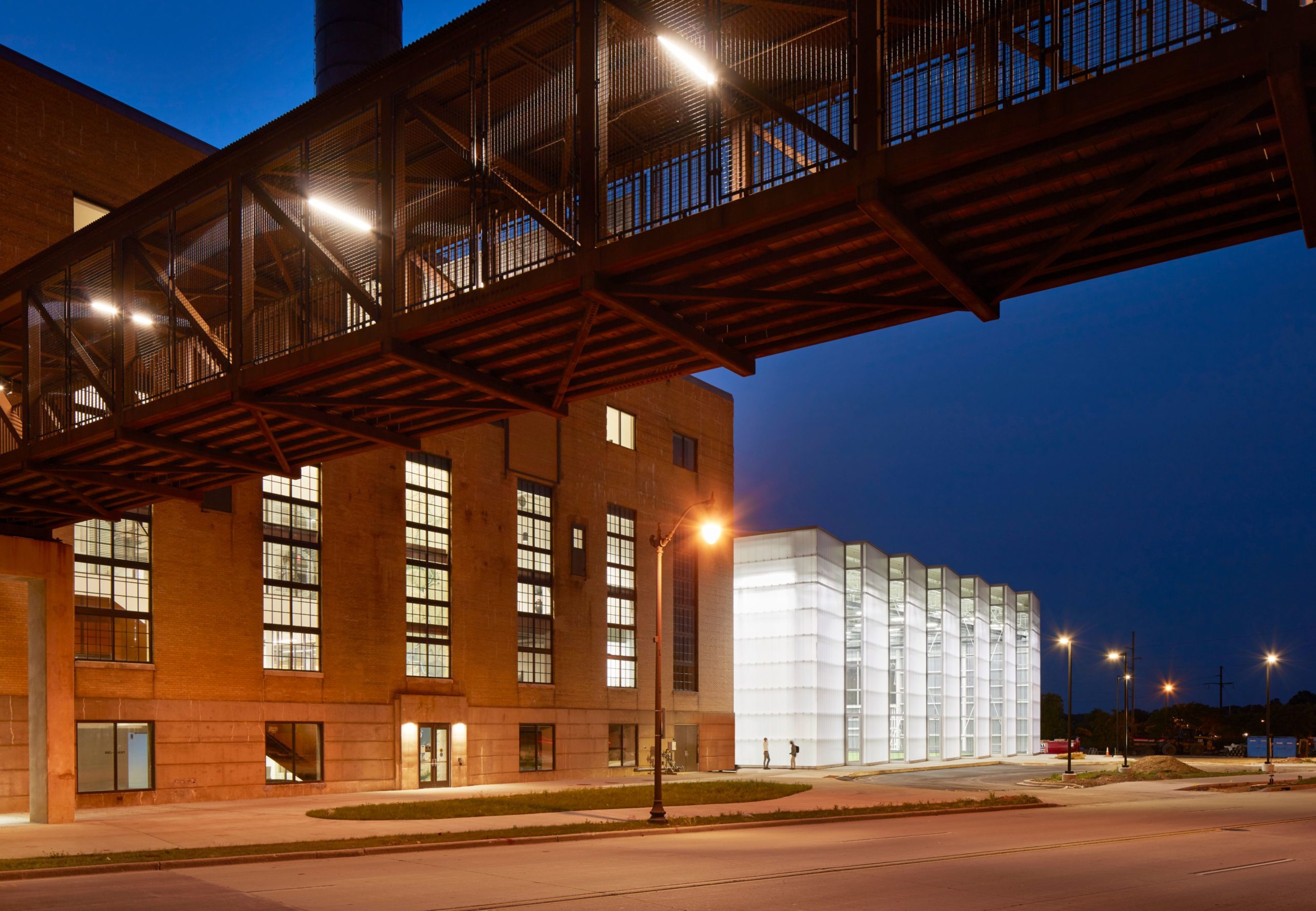
Photos by Tom Harris
A pedestrian bridge and publicly accessible elevator connect the Beloit College campus, which sits on a hill, with the Powerhouse and the adjacent riverside paths and ground-level parks. Forming these new links between town and river, the adaptive reuse of the former power plant has an important urban dimension, which seeks to generate a more active and vibrant community life outside its walls.
Construction began back in February of 2018 when Corporate Contractors, Inc. (CCI) broke ground on the 105,000-square-foot project. The $38 million price tag was not a burden to the students: it was paid by donations from alumni, community members, and government sources, including historic tax credits from the state and federal government. “We achieved that goal, and no tuition dollars students will pay a mortgage,” said Dan Schooff, who acted as project manager on behalf of the school.
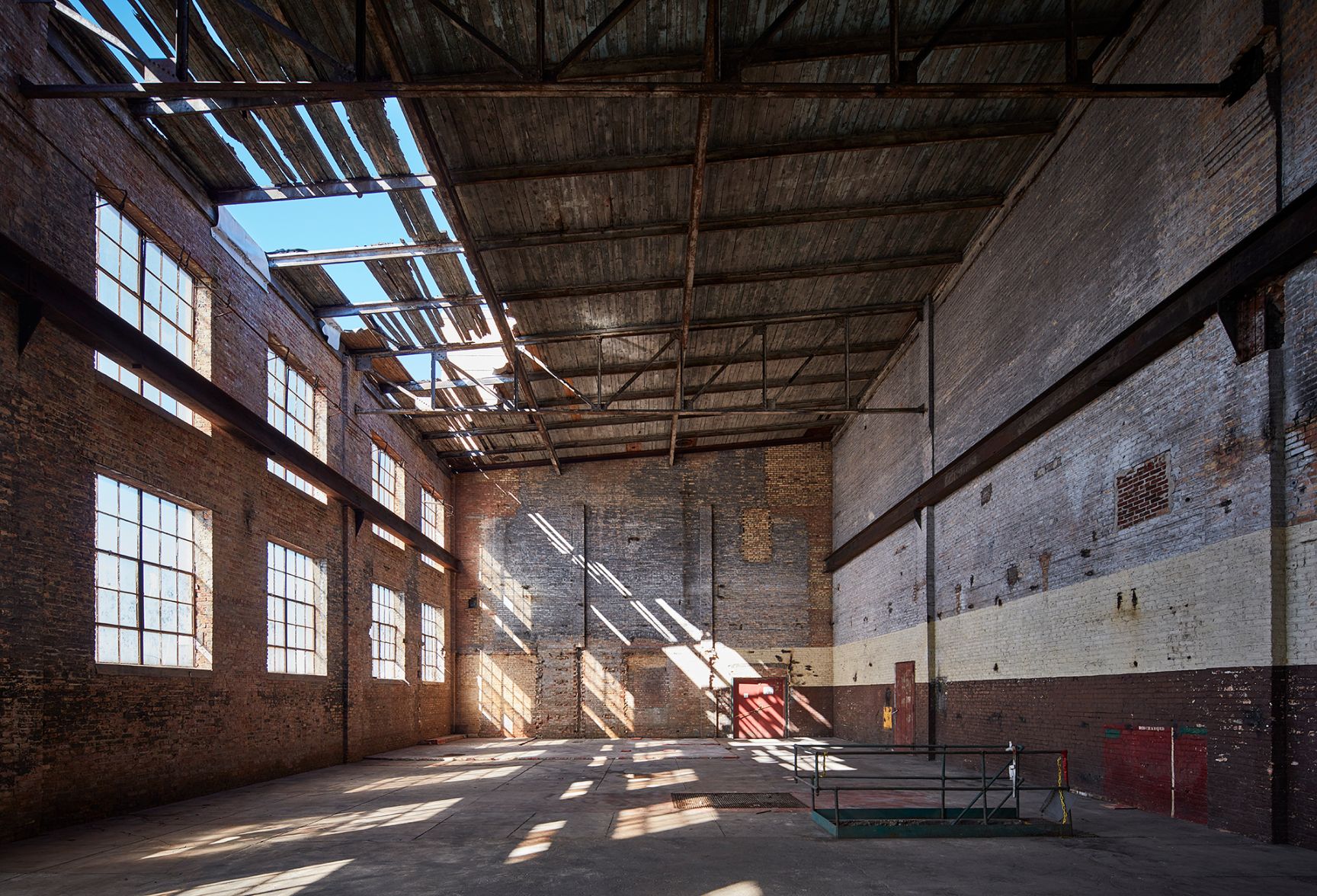
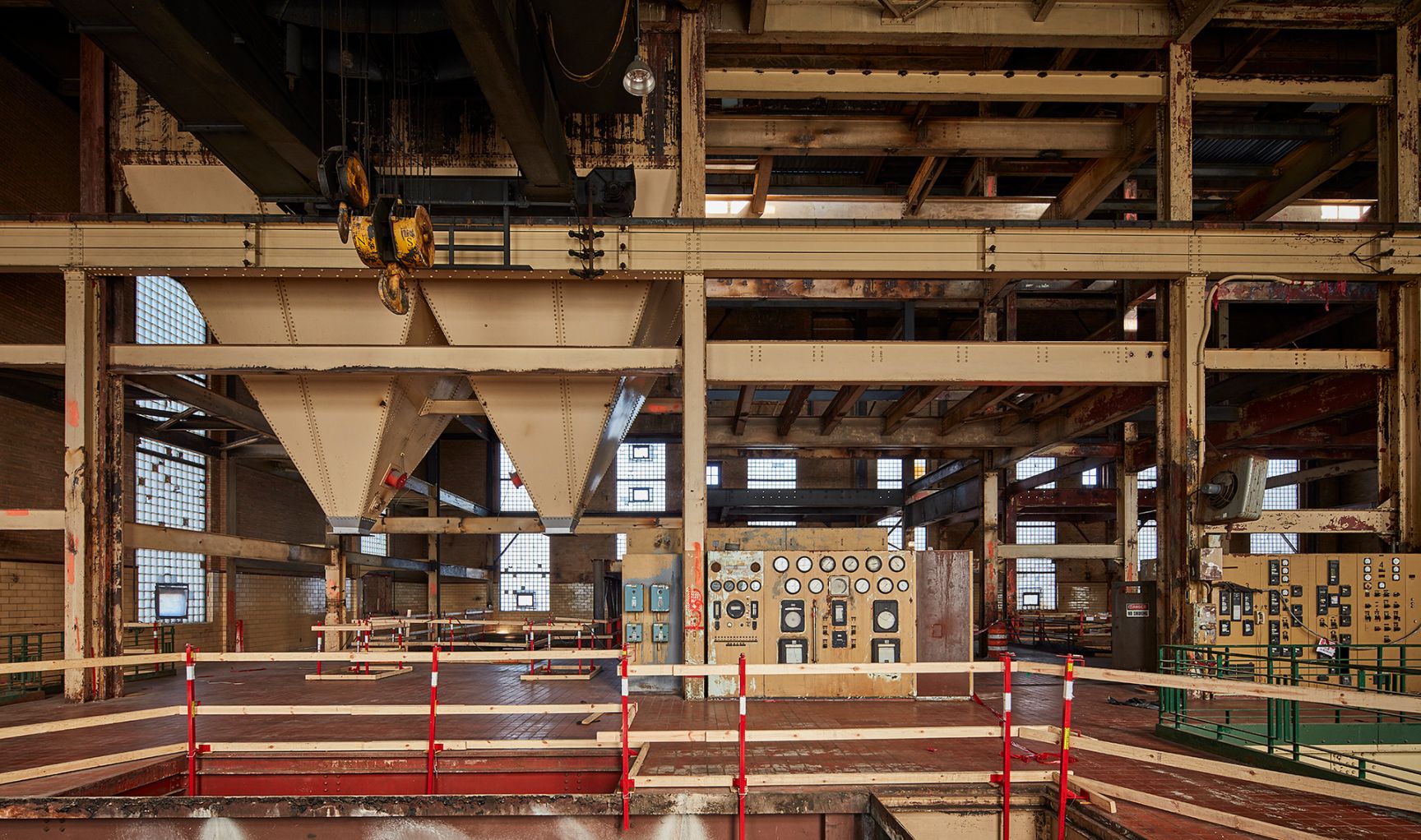
Photos by Tom Harris
More than a striking example of how coal infrastructure can be repurposed, there is something that is almost poetic about a decommissioned plant — which once contributed to the atmospheric pollution that harmed and continues to harm human and ecological health — becoming a space centered on recreation and wellness for the next generation.
As the future of our planet becomes more and more dire, and it is crucial that humanity quickly transition to natural gas and ramp up renewable options, while imposing stricter emissions regulations. All of these efforts will lead to the closure of coal-fired power plants. Given the current state of the world and the role played by the coal industry in the climate crisis, there is a natural impulse to trash all relics of the fossil fuel industry, rather than marking them as architectural heritage or historical sites. By transforming them into positive community hubs, we are neither celebrating nor erasing their fraught histories, but instead marking hopeful moments for change.
Celebrate a Decade of Inspirational Design with us! Architizer’s 10th Annual A+Awards program launches this fall — sign up to receive key program updates and deadline reminders.






